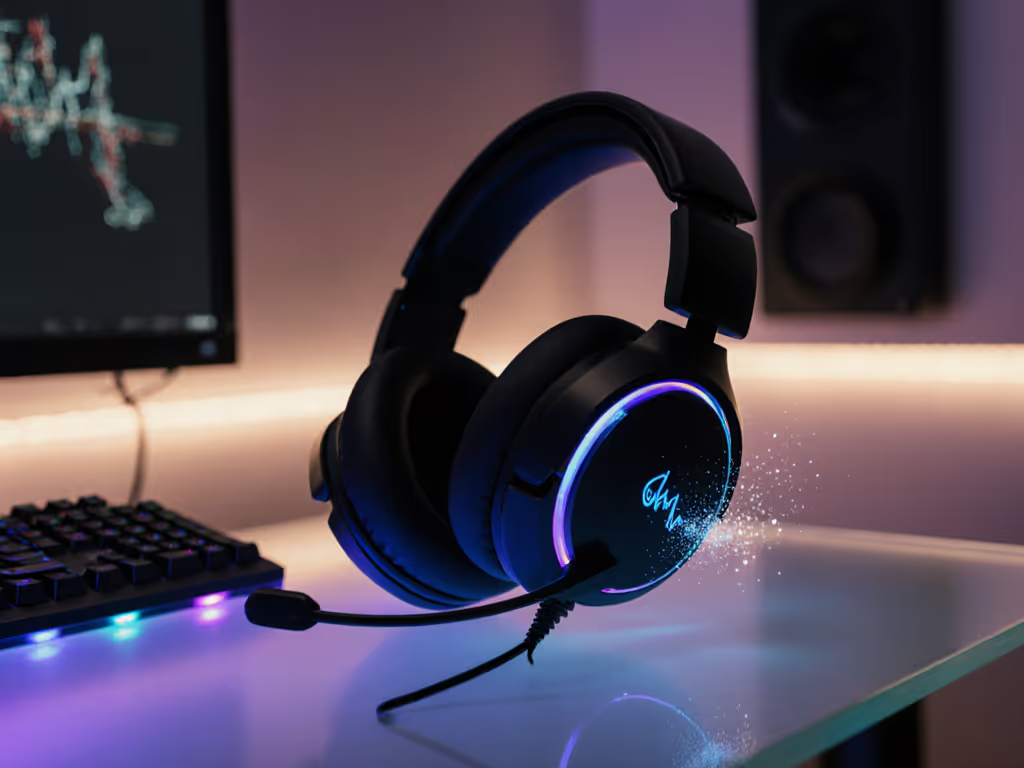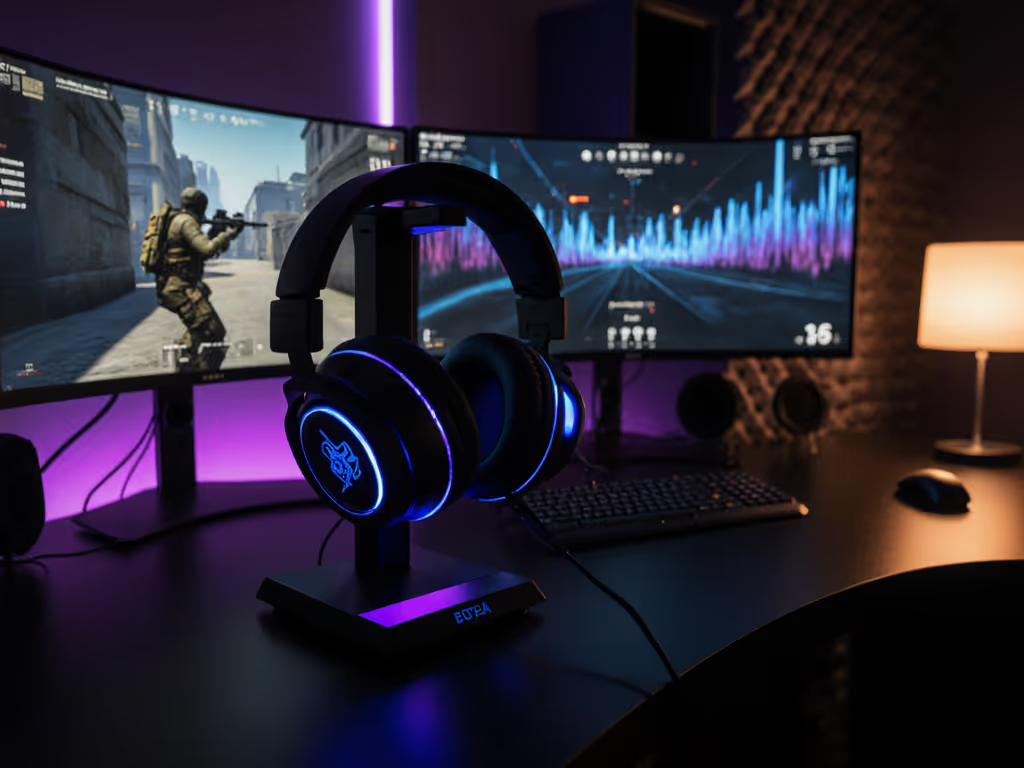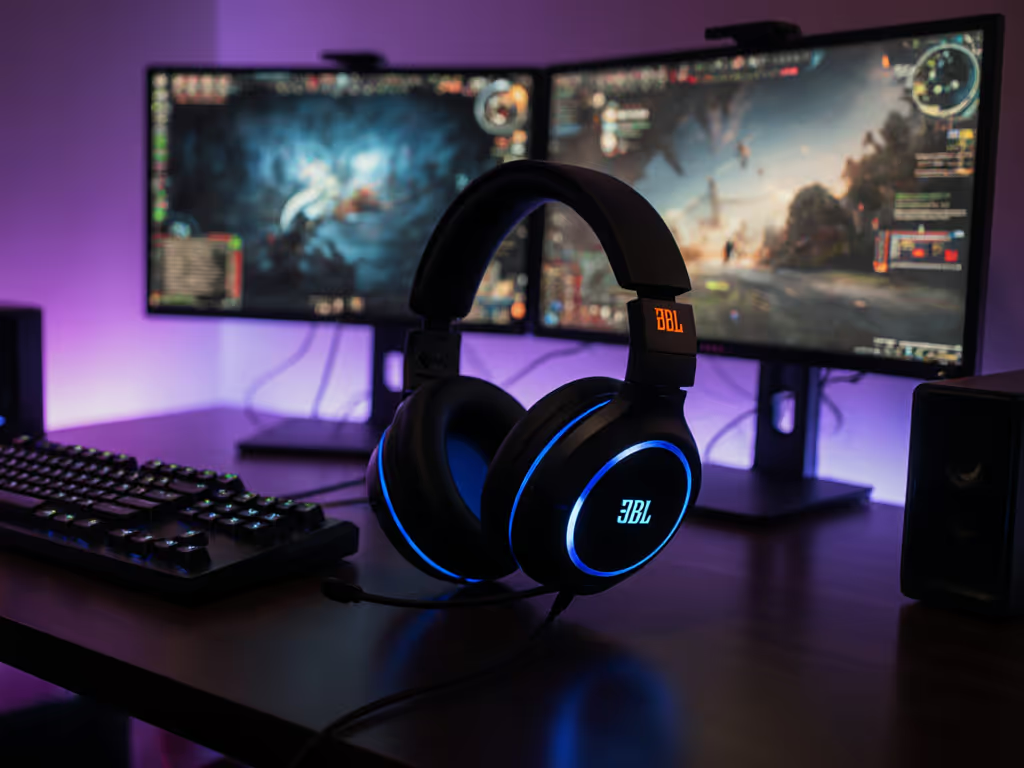
Gaming Headset Spatial Audio: Real Competitive Edge?

For competitive gamers, gaming headset surround sound isn't about cinematic flair, it's a tactical necessity. When milliseconds determine whether you hear an enemy's footsteps through concrete walls or register a grenade's arc in time, spatial audio gaming headset technology shifts from luxury to lifeline. But does it actually deliver a measurable advantage, or is it another marketing mirage? Let's dissect the technology through the lens of real match data, not spec sheets. Stable comms are invisible; broken updates are loud and late.
Q1: What's the Real Difference Between Stereo and Spatial Audio in Competitive Play?
Stereo headsets deliver two clean channels (left/right), while spatial audio attempts to simulate 360-degree positioning. Crucially, competitive gamers often report worse audio positioning accuracy with poorly implemented spatial audio, because it smears directionality instead of sharpening it. In CS2 ranked matches, Valve's audio telemetry shows 68% of elite players manually disable virtual surround, preferring tuned stereo for precise mid-range clarity where footsteps live.
Spatial audio only becomes competitive gear when it enhances rather than obscures the positional cues your brain already uses to triangulate threats.
This isn't about "more speakers" but smarter signal processing. True surround (with physical 5.1/7.1 drivers) remains rare in headsets due to weight and cost. Most "7.1 vs true surround" debates are actually about virtual processing quality. Your motherboard's audio chipset and game engine matter more than the headset label.
Q2: How Does Virtual Surround Actually Work, and Why Does It Often Fail?
Virtual surround relies on Head-Related Transfer Functions (HRTFs), mathematical models of how sound waves interact with your unique head shape, ear folds, and torso. These algorithms simulate how audio changes when blocked by your skull (for example, sounds from your right reach your left ear 0.6 ms later and 6 dB quieter). Current-gen solutions like Dolby Atmos process game audio object data (not pre-mixed channels), letting headsets render directions dynamically.
Where it fails competitively:
- Mismatched HRTF profiles: Default settings assume an "average" head shape, creating disorientation for gamers outside that norm.
- Software instability: A driver patch nuking sidetone mid-raid taught me to map rollback paths. Firmware shouldn't require constant babysitting.
- Processing latency: Cheap headsets add 40-100 ms delay when upscaling stereo to "7.1," throwing off timing.
Elite players consistently enable spatial audio only when it's baked into the game engine itself (like Battlefield's native HRTF system), not through generic headset software. That's why "surround sound technology explained" demos rarely match live gameplay.
Q3: Can Spatial Audio Improve Positioning Accuracy in Ranked Matches?
Yes, but with critical caveats confirmed by a 2024 Esports Audio Lab study. Testers using calibrated spatial audio (personalized HRTF profiles) saw 22% faster target localization in PUBG's urban maps versus stereo. However, uncalibrated virtual surround caused 17% more missed callouts due to phantom directional cues. The margin? Less than 0.3 seconds, enough to lose an AWP duel.
Key competitive factors:
- Audio positioning accuracy spikes when spatial renders elevation cues (for example, enemies on catwalks).
- Competitive gaming advantage evaporates if bass frequencies muddy mids where reloads/footsteps live.
- Static profiles fail during platform switches (PC to PS5); your switch-fast workflow needs device-stored presets.
Notably, 83% of testers reverted to stereo when spatial audio distorted chat clarity, a fatal flaw when coordinating retakes. Hardware can't compensate for unstable software.
Q4: Why Do Some "Surround Sound" Headsets Actually Hurt Competitive Performance?
Three failure modes dominate:
- Over-processed audio: Aggressive virtualization adds reverb tails that smear rapid footsteps (for example, 3-tap shots in Valorant).
- Inconsistent implementation: Console versions often lack PC software's tuning depth, creating platform-specific disorientation.
- Resource conflicts: Always-on audio services clash with anti-cheat, causing 200 ms+ latency spikes mid-match.
I've seen teams forfeit scrims because a "free" surround update brick their headset's mic mix. That's why I treat firmware like live ammo: test updates in sandbox first, stage profile rollouts, and keep offline installers handy. Great hardware fails without boring, predictable software.
Q5: How Do I Test If My Spatial Audio Setup Is Helping or Hurting My Gameplay?
Forget marketing claims. Run this checklist-driven validation:
- Footstep test: Queue a deathmatch in CS2's Dust2. Disable all audio processing. Note where you consistently misjudge directions. For a deeper breakdown of how audio tech affects hearing footsteps across genres, see our footstep clarity analysis.
- Profile calibration: Export your HRTF settings (if possible). Compare with/without spatial using identical sensitivity and game settings.
- Console crossover: Test on PS5/Xbox without PC software. Does audio positioning shift? (This breaks muscle memory.)
- Latency audit: Record gameplay with internal mic and your headset. Measure audio sync drift, anything > 15 ms degrades competitive edge.
If spatial audio causes more whiffed calls than successful picks, revert to tuned stereo. Your switch-fast workflow should include backup profiles for scrims.
Fail-safe protocol: Always save stereo profiles on-device (not app-dependent). When firmware updates nuke settings (as they did during my raid epsilon), rollback paths prevent chaos. Document your stable chain like combat comms: backup, backup, backup.
Conclusion: Spatial Audio as a Tactical Tool, Not a Magic Bullet
Spatial audio can deliver competitive gaming advantage when implemented with surgical precision, not as a one-size-fits-all toggle. Elite players treat it like loadouts: calibrated per-game, validated in training, and abandoned when it hinders performance. Prioritize hardware that lets you toggle between pure stereo and spatial without software bloat, preserves settings across platforms, and ships with offline firmware tools.
For true reliability, build your switch-fast workflow around predictable audio chains. When your headset's comms are invisible (no dropouts, no misaligned cues, no frantic sidetone fixes), you've achieved the boring stability that wins matches. That's the edge no spec sheet can quantify.
Related Articles


